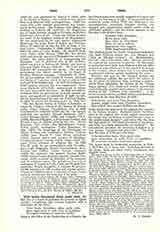

Urbs beata Jerusalem dicta pacis visio, the first line of a hymn of probably the seventh or eighth century, comprising eight stanzas (together with a doxology) of the form:
Urbs beata Jerusalem, dicta pads visio, Quin construitur in coelo vivis ex lapidibus, Et angelis coronata ut sponsata comite.
Sung in the Office of the Dedication of a Church, the first four stanzas were usually assigned to Vespers and Matins, the last four to Lauds. In the revision by the correctors under Urban VIII (see Breviary) the un-quantitative, accentual, trochaic rhythm was changed into quantitative, iambic meter (with an additional syllable), and the stanza appears in the Breviary with divided lines:
Coelestis Urbs Jerusalem, Beata pacis visio, Qum celsa de viventibus Saxis ad astra tolleris, Sponsieque ritu cingeris Mille Angelorum millibus.
The original hymn for Lauds (Angularis fundamentum lapis Christus missus est) was changed into “Alto ex Olympi vertice”, etc. Hymnologists, Catholic and non-Catholic alike, criticise adversely the work of the correctors in general. Of this hymn in particular some think that, whereas it did not suffer as much as some others, yet it lost much of its beauty in the revision; others declare that it was admirably transformed without unduly modifying the sense.
However this may be, the changed rhythm and the additional syllable did not deter the editors of the Ratisbon Antiphonary from including a melody, which fitted admirably the rhythm of the “Pange lingua gloriosi”, but which was greatly marred and rendered hardly singable when adapted to the reversed rhythm of the “Coelestis Urbs Jerusalem“. A different textual revision, ascribed to Sebastian Besnault, appeared in the Sens Breviary of 1626:
Urbs beata, Vera pacis Visio Jerusalem, Quanta surgit! celsa saxis Conditor viventibus:Qum polivit, haec cooptat Sedibus suis Deus.
Neale thinks this inferior to the original, but superior to the Roman revision. Roundell admits the blemishes in the original that would suggest emendation, but thinks that the Roman revision left out “most of the architectural imagery”, and notes that the Sens Breviary omitted “the whole conception of the Heavenly City `as a bride adorned for her husband'”. He nevertheless considers the revisions, if looked at as new hymns, “spirited and attractive”. The Parisian Breviary of 1736 gives the form:
Urbs Jerusalem beata Dicta pacis visioquae construitur in coelis Vivis ex lapidibus, Et ovantum coronata Angelorum agmine.
The hymn finds its Scriptural inspiration in Eph., ii, 20; I Pet., ii, 5; Apoc., xxi. Including all forms of the hymn, there are about thirty translations into English verse.
H. T. HENRY

